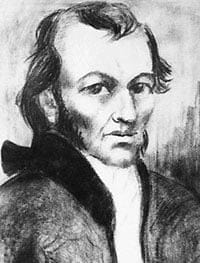
©History-Computer.com/History Computer Staff
Who Was Wolfgang von Kempelen?
Wolfgang von Kempelen is a man revered for his inventions that created hot debate in the 18th century. The Turk and the Speaking Machine are among his creations that are known to date. Wolfgang was the youngest of three brothers. The first brother, Andreas Johann Christoph von Kempelen, studied philosophy and law, was secretary of the ambassador in Constantinople, and fought in the war of Silesia. He died in 1753 from a lung disease, just after he was appointed as the private teacher of the Austrian heir Prince Joseph. Wolfgang’s second brother, Johann Nepomuk Freiherr von Kempelen Barón de Pázmánd, also served in the army and was promoted to the rank of Major General.
Early Life
Although for many years the Turk inventor is known as Wolfgang von Kempelen, his full name is Johan Wolfgang Ritter von Kempelen. Wolfgang was born on January 23, 1734. His father (Engelbert Kempelen) was a noble court counselor. As a court counselor, Wolfgang’s father was also in charge of tax in the tax office from 1715.
Quick Facts
- Full Name
- Wolfgang von Kempelen
- Birth
- January 23, 1734
- Death
- March 26, 1804
- Net Worth
- Approximately $100k-$1M
- Children
- Juliana (1763), Marie-Anna (1764), Andreas Christian (1766), Maria Terez (1768), Karl (1771)
- Nationality
- Austrian/Hungarian
- Place of Birth
- Salzburg, Austria
- Fields of Expertise
- [“Inventor”,”Scientist”]
- Institutions
- Primary school in PreBburg, Gyor secondary school, Vienna University
- Contributions
- Invented the Mechanical Turk, the Speaking Machine, the Mobile Bed, Pontoon Bridge, and designed the Buda Castle Theatre
Wolfgang’s father, who was born in 1680 and died in 1761, close to 30 years after the birth of his son, was of Irish descent. His mother, Anna Terezia Spindler was the daughter of a former mayor of the PreBburg municipality.
When he was still a boy, Johan Wolfgang Ritter von Kempelen was baptized at St. Martin’s Cathedral and given the name Wolfgangus Franciscus de Paola Joannes Elemosinarius.
Although he was given a new name after his baptism, he never used his new name. Nobody referred to him using his new name. The name is only found in the books of history but many people used part of his birth name, Wolfgang von Kempelen.
Wolfgang von Kempelen had two siblings. He was the youngest among them all. His older brother, Andreas Johann Christoph von Kempelen, studied law and philosophy. Upon his graduation, he started working as the secretary to the then ambassador, based in Constantinople.
Christoph took part in the war that took place in Silesia. The war came to be known as the War of Silesia. Andreas Johann Christoph died in 1753 after battling lung cancer for some time. His death came a few days after he was appointed a private teacher.
As a private teacher, Christoph was tasked to teach Austria’s heir, Prince Joseph but he did not manage to teach his boss because he succumbed to lung cancer.
Wolfgang’s other brother, Johann Nepomuk Freiherr von Kempelen Barón de Pázmánd was an army officer. As a soldier, he took part in different battles. At the height of his career, Johann Freiherr von Kempelen was promoted to become a Major General, one of the highest ranks in the army.
Wolfgang von Kempelen went to a primary school in PreBburg. In 1850, he started his secondary education at Gyor. Things became so hard for him after secondary school. Wolfgang had a rough time choosing what to study.
The young man had a lot in mind. Many things fascinated him. He wanted to study natural sciences, mathematics, physics, literature, architecture, and music.
Some unconfirmed sources claim Wolfgang studied philosophy and law like his older brother at Vienna University. Interestingly, Wolfgang von Kempelen was a polyglot. He was so good at whatever he did that some people said he was a perfectionist.
Apart from his native German language, Wolfgang spoke eight different languages. He was fluent in French, Hungarian, Latin, Slovak, English, Irish, Romanian, and Italian. The native house of Kempelen is still preserved in Bratislava (see the photo below).
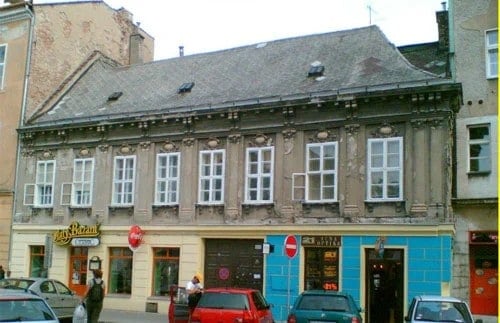
©History-Computer.com/History Computer Staff
Career
Wolfgang traveled a lot. He made many visits across the Italian cities of Naples and Rome. While doing his many travels across ancient European cities, he was able to do the first substantive thing in his life.
In 1755, Wolfgang was among the people who took part in the compilation and translation of Empress Maria Theresia’s civil law book (Codex Theresianus). The team’s task was to translate Empress Maria Theresia’s civil law book from the Latin language to German.
Thanks to his punctual and prompt work during the compilation and translation of the civil law book, Wolfgang earned himself a job. His first official job was when he was appointed the Hungarian court advisor. Two years after his appointment as the court advisor, Wolfgang was promoted to become a secretary in the same court.
Wolfgang continued to work within the corridors of the Hungarian courts until 1766 when he was appointed the director of Hungarian Salt Mines. Two years later, Wolfgang was appointed the settlement commissioner in charge of the Banat region.
It is here in the Banat region that the Vienna court held its sessions for several months. The court sessions were aimed at carrying out an intensive settlement policy, which aimed at repopulating the provinces at the southeast, that border Germany.
Wolfgang did a remarkable job of resettling over 37,000 families. He was in charge of the commission that designed and built new houses for these families. To help these families and the economy in general, Wolfgang introduced flax, a new crop that produced linen. Later, he built a silk factory in the area.
Still, in his capacity as the settlement commissioner, Wolfgang commissioned the work of draining the swampy area of Timisoara in Banat. He also built roads and rebuilt schools that had been destroyed. Thanks to his efforts, the city of Banat was completely revamped.
Before he embarked on the enormous job of settling the populations in the southeast and helping rebuild their municipality, Kempelen had his outline compiled and substantial reports pinned in court.
The reports were pinned in the Vienna court in 1768, 1769, and later in 1770. Many people noticed Kempelen’s purposeful work. In 1771, after several months of intense work, Maria Theresia gifted Kempelen 1000 Gulden and an annuity of the same amount.
Because his work proved to be good in the face of many people, the Empress invited Kempelen to attend a magnetic experiments event that was held in Vienna. French illusionist Francois Pelletier organized the experiments.
While at the event, Kempelen saw how the Empress was impressed. On his part, he was not impressed and vowed to make something more impressive. Wolfgang even told the Empress that he would invent something that was far more impressive than what he saw.
The technology enthusiast even promised the Empress that his invention would be ready within six months. Kempelen started to work on his chess-playing android in 1769, a few days after attending the magnetic experiment in Vienna.
Wolfgang intended that the automaton would be something that people would enjoy seeing and even using while at the court.
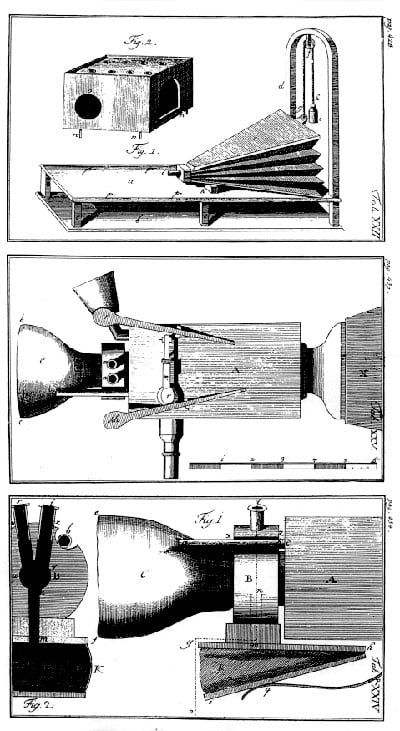
What Did Wolfgang von Kempelen Invent?
It was in 1770 when Kempelen’s first invention was shown to the public. As Wolfgang promised, the first one to see the Mechanical Turk, a chess-playing android machine, was the Empress. The chess-playing machine became famous quickly.
Mechanical Turk (Automaton Chess Player)
Wolfgang von Kempelen’s first invention was the chess-playing machine. He invented this machine in the second quarter of 1770. The machine impressed the empress more than the magnetic machine he saw during the Vienna magnetic experiment a few months earlier.
Many people across Europe wanted to see this new invention. There is no single automaton that was praised in the 18th century as Wolfgang’s chess-playing machine. Many people were amazed by the way this machine worked.
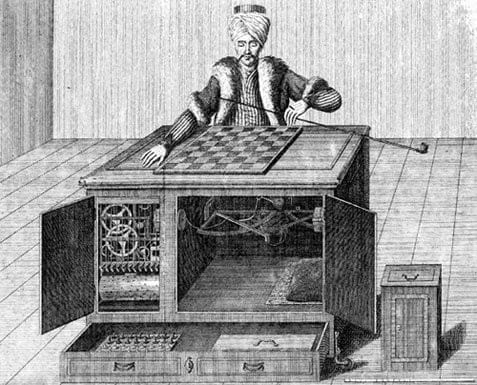
©History-Computer.com/History Computer Staff

©History-Computer.com/History Computer Staff
All that saw the machine had many questions but very few answers. They wanted to know how the machine worked, so they started to probe. The following ten years were particularly interesting times.
During this time, people wanted to know who/what thing made the movements with some saying there was a person behind the chess-playing machine that prompted the movements. In 1785, fifteen years after the invention of the machine, someone discovered the truth — there was a man hidden behind the cabinet who was responsible for the movement of the figures.
Pontoon Bridge
In the same year that Kempelen designed the chess-playing machine, he also created a pontoon bridge that passed over the River Danube, PreBburg.
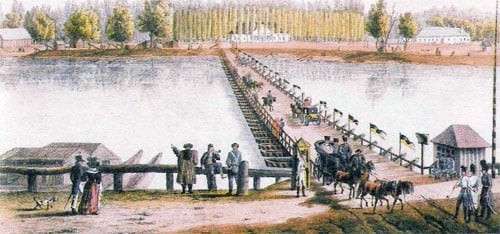
©History-Computer.com/History Computer Staff
Two years later in 1772, Kempelen was also tasked to construct a water supply to the recently-rebuilt PreBburg Castle.
Mechanical Speech Machine
Kempelen designed a mechanical speech machine, also known as the mechanical speaking machine, the speech machine in 1769. The speaking machine was aimed at helping people who had speaking problems through speech synthesis.
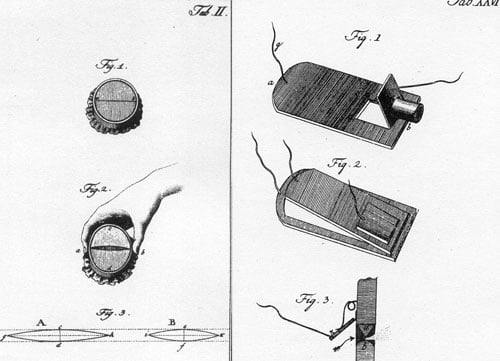

A Mobile Bed
When Maria Theresia caught smallpox in 1774, Wolfgang von Kempelen designed a mobile bed for her. The bed could help the ailing Empress to discharge her duties easily. Thanks to Kempelen’s mobile bed, Maria could move from one room to another, sit, lie, and even write with ease.
Wolfgang von Kempelen: Marriage, Divorce, Children, and Personal Life
Although a genius, Wolfgang von Kempelen, the Turk inventor was human. He lived a normal life and had a family. He was however not a very good man in matters of family life. He devoted most of his time to doing his various inventions.
Net Worth
Approximately $100K-$1M
Marriage
On September 6, 1757, Wolfgang von Kempelen married Francziska Piana. Unfortunately, smallpox caught up with Francziska and she died two months after their marriage in Vienna. After the death of his newly married wife, grief took a toll on Kempelen.
To battle grief, the Turk inventor spent several hours in his workshop. The chess automaton inventor distracted himself by doing dozens of things in his workshop. Some of the things he learned include clockmaking and woodworking.
After some time, Kempelen remarried. This time, in 1762, Kempelen married Anna Maria Gobelius. Together, they had five children. Three of the children died shortly after they were born.
Children
Kempelen and Anna Maria Gobelius were blessed with five children; Juliana (1763), Marie-Anna (1764), Andreas Christian (1766), Maria Terez (1768), and (1771).
Tragedy
Wolfgang von Kempelen died on March 26, 1804. Just before Kempelen’s death, probably because of his reformist thoughts, Emperor Franz II canceled the annuity. This remarkable inventor, after a fruitful life abounding in experiences, died highly esteemed in his 70th year in Alservorstadt near Vienna.
Wolfgang von Kempelen: Awards and Achievements
Patent from Emperor Joseph II
Emperor Joseph gave Wolfgang a patent for the invention of various things including the ability to drive all kinds of machines and mills. The patent took effect in 1788/1789 and lasted for 12 years.
Designed the Buda Castle Theatre
In 1790, Wolfgang von Kempelen designed the Buda Castle Theatre.

©History-Computer.com/History Computer Staff
Wolfgang von Kempelen: Published Works and Books
Kempelen managed to publish two books in his lifetime.
- An Attempt to Analyze the Automaton Chess Player
- Collection of The Knight’s Moves Over the Chess Board

and signature of
Wolfgang von Kempelen (charcoal drawing; Szépmüvészeti Múzeum, Budapest)©History-Computer.com/History Computer Staff
The image featured at the top of this post is ©History-Computer.com/History Computer Staff

